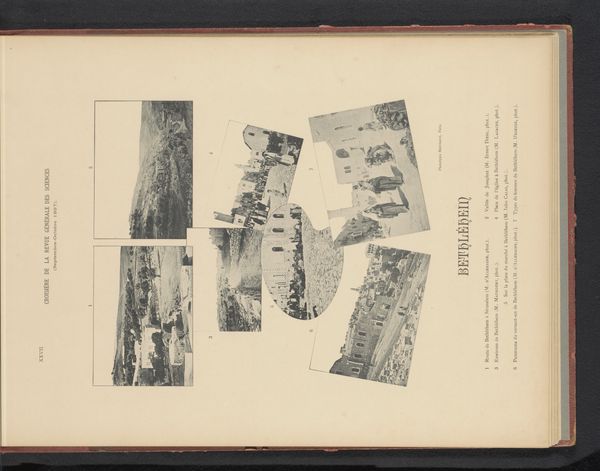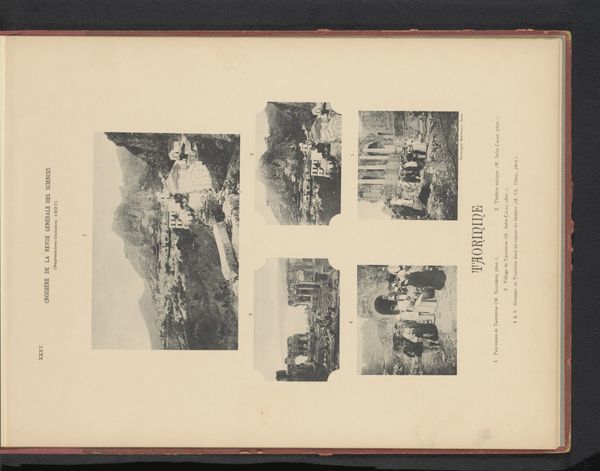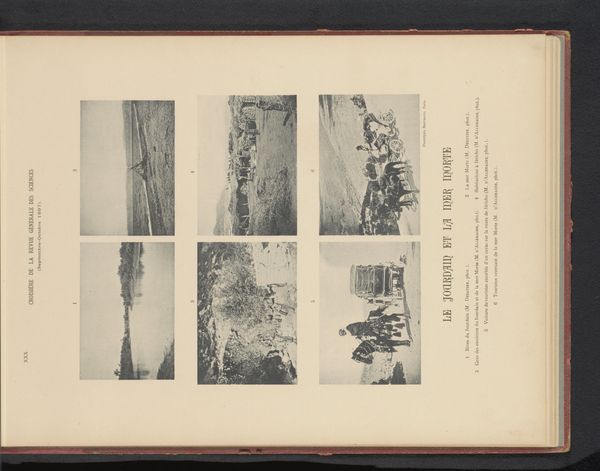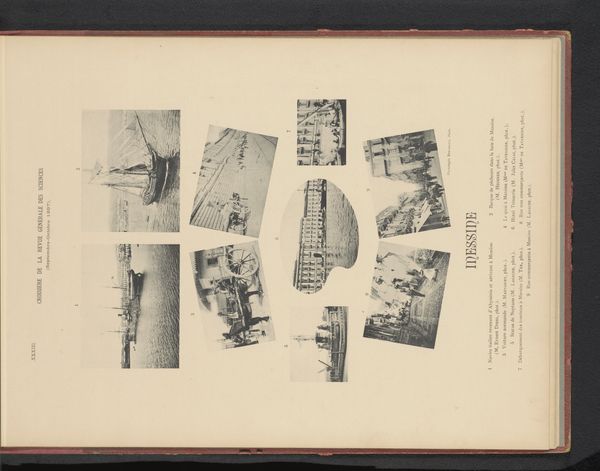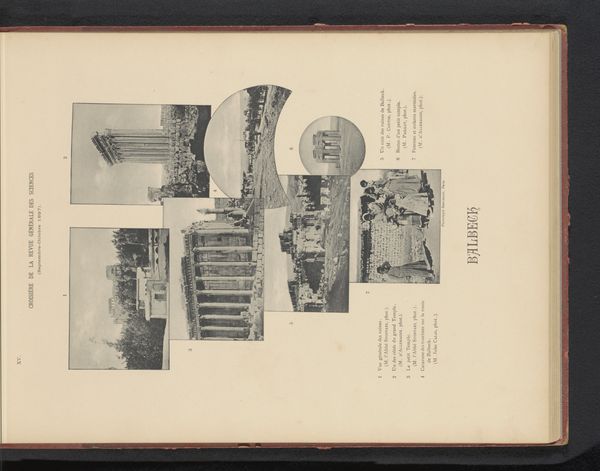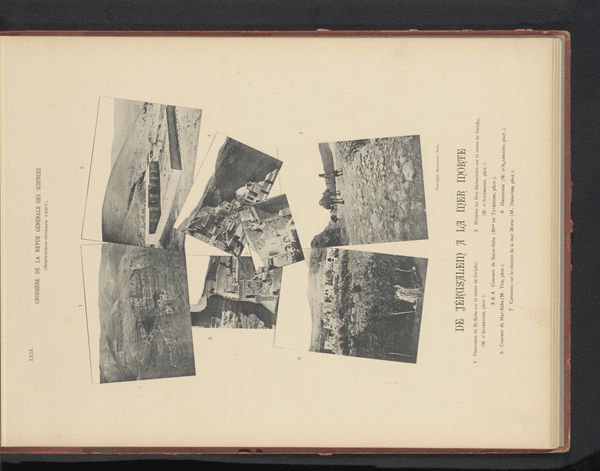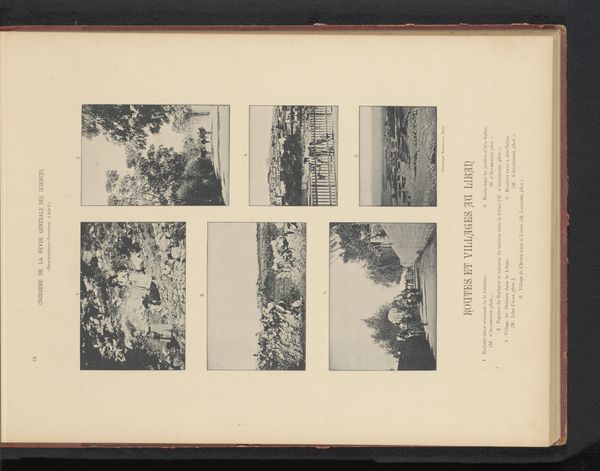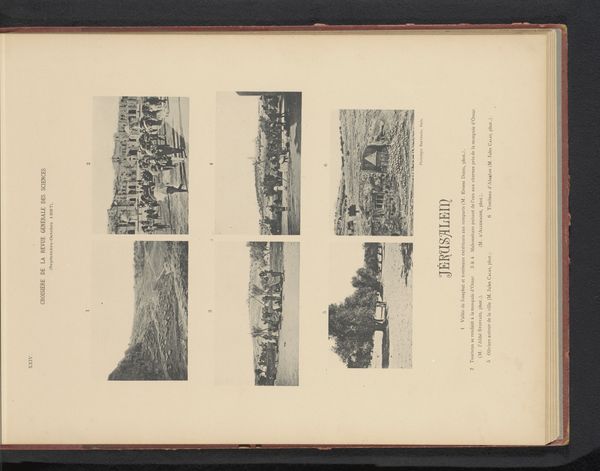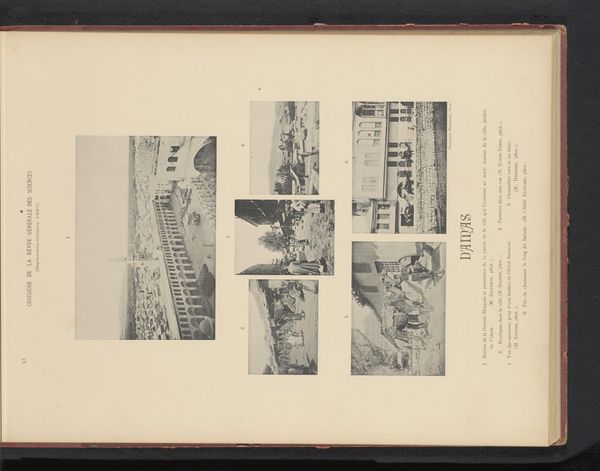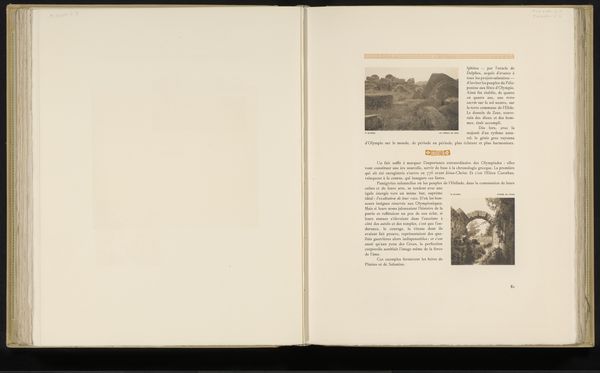
print, photography, albumen-print
# print
#
photography
#
orientalism
#
cityscape
#
watercolour illustration
#
street
#
watercolor
#
albumen-print
#
historical font
Dimensions: height 355 mm, width 293 mm
Copyright: Rijks Museum: Open Domain
Curator: The overall feeling is rather subdued, wouldn't you agree? Almost sepia-toned, a world captured in a bygone era, like faded memories clinging to the page. Editor: Indeed. What we have here is a collection entitled "Zeven gezichten op Jeruzalem, Israël" or "Seven Views of Jerusalem, Israel", dating from before 1898. It is made with the albumen print technique which explains that unique colour, a process prevalent during the rise of photography. But there is more than just the views, the page has typography, framing each image which are scattered around. This placement suggests a careful consideration for layout within a larger publication. Curator: The layout almost gives it a scrapbook feel. The font itself, it looks so antiquated yet dignified, a real testament to the historical perception of Jerusalem and its portrayal through typography of the time. The typography and photographs are working together, yet also clashing to convey something unique and perhaps deeper than expected. Editor: That is so. And look closely: We see glimpses of daily life, bustling streets perhaps or sacred walls. The symbols are muted yet evocative – the textures, even in monochrome, speak volumes about this holy place. The architectural details point to its multilayered religious history and contested history as well. It invites interpretation. Curator: There’s a profound emotional quality about this work, even through the mechanical reproduction. One can't deny Jerusalem has had deep resonance as the "Holy City". Its importance as a melting pot is only reinforced by these visual fragments and the different historical elements shown here. Its past is literally layered, if you think of those different religious quarters we see here. Editor: Absolutely. It serves as a visual artifact. It is indicative of broader trends in 19th-century Orientalist art. We begin to grasp how places are represented. Images of the “Holy Land”, then mass-produced for consumption and distributed to viewers far removed from the region itself. Curator: The work certainly provides us with windows into a complex, multilayered relationship to faith, history and representation, I will ponder on this piece a bit more later on. Editor: Yes, it urges us to critically reflect on how imagery shapes perception.
Comments
No comments
Be the first to comment and join the conversation on the ultimate creative platform.

